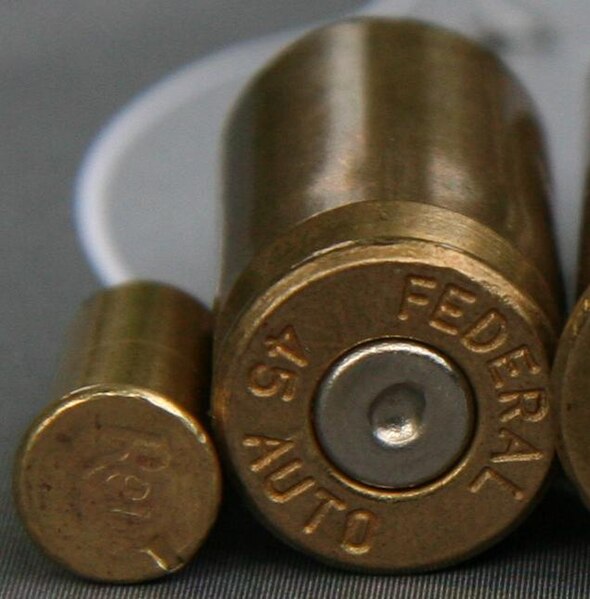.17 Hornady Magnum Rimfire, commonly known as the .17 HMR, is a rimfire rifle cartridge developed by Hornady in 2002. It was developed by necking down a .22 Winchester Magnum Rimfire case to take a .17 caliber (4.5mm) projectile. Commonly loaded with a 17 grain projectile, it can deliver muzzle velocities in excess of 775 m/s.
17-grain (1.1 g) A Sellier and Bellot .17 HMR round with a light green plastic tip.
Left: .17 HMR, Right: .22 WMR
A .17 HMR round with a ballistic tip (left) compared with a .22 Long Rifle round (right)
A case of .17 HMR rounds with hollow points
A rim-fire is a type of metallic cartridge used in firearms where the primer is located within a hollow circumferential rim protruding from the base of its casing. When fired, the gun's firing pin will strike and crush the rim against the edge of the barrel breech, sparking the primer compound within the rim, and in turn ignite the propellant within the case. Invented in 1845 by Louis-Nicolas Flobert, the first rimfire metallic cartridge was the .22 BB Cap cartridge, which consisted of a percussion cap with a bullet attached to the top. While many other different cartridge priming methods have been tried since the early 19th century, such as teat-fire and pinfire, only small caliber rimfire cartridges have survived to the present day with regular use. The .22 Long Rifle rimfire cartridge, introduced in 1887, is by far the most common ammunition found in the world today in terms of units manufactured and sold.

Fired rimfire (left) and centerfire cartridges. A rimfire firing pin produces a notch at the edge of the case; a centerfire pin produces a depression in the center of the primer.
6 mm Flobert or .22 BB Cap ammo with Container
.41 Swiss rimfire cartridge
.22 Long Rifle – subsonic hollow point (left), standard velocity (center), hyper-velocity "Stinger" hollow point (right)








